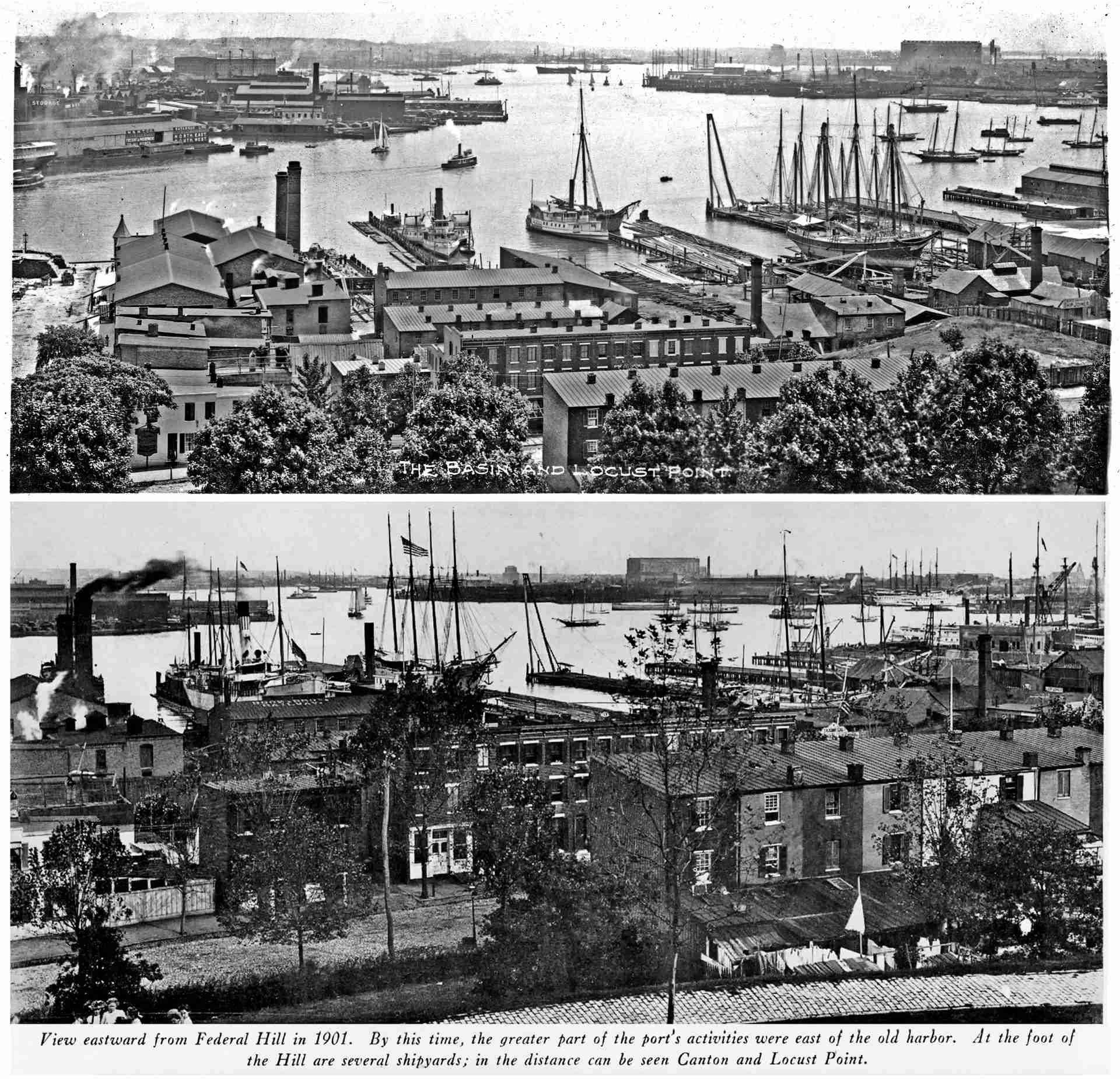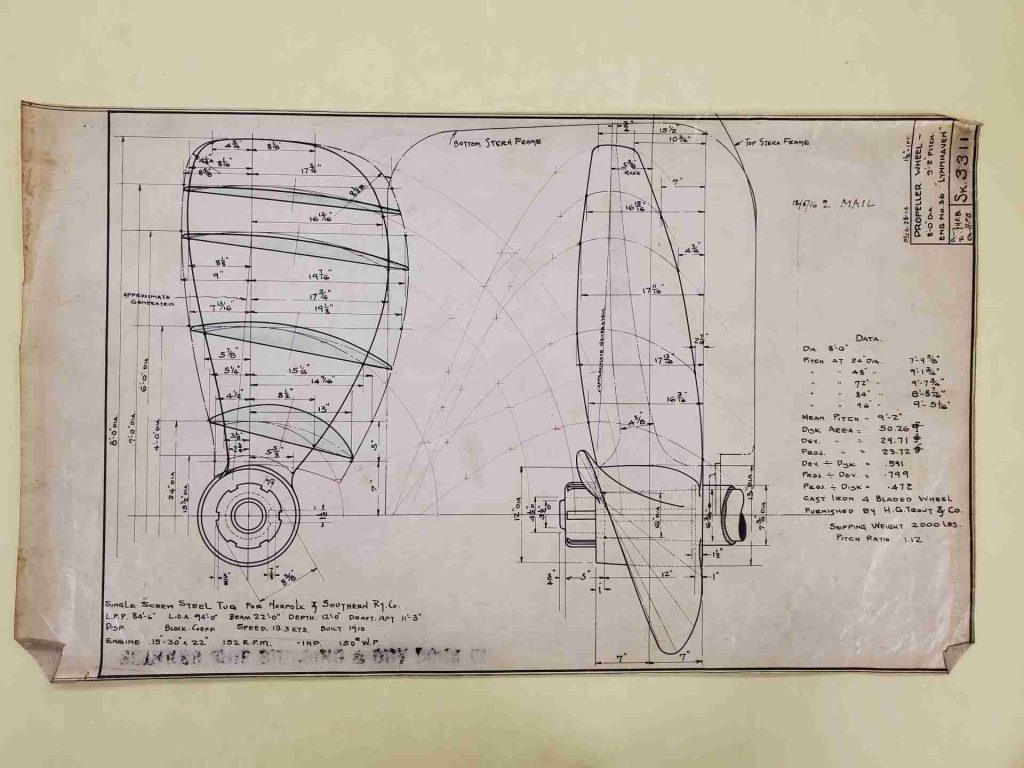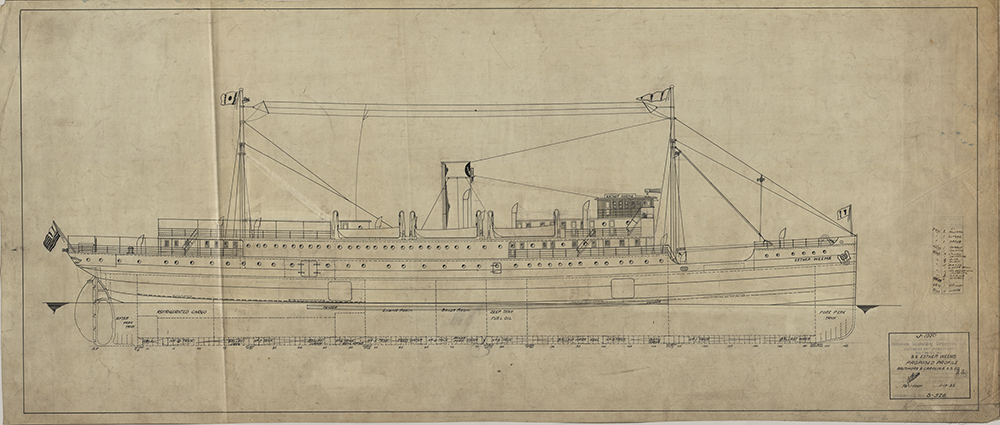History of the Bethlehem Steel Ship Plans Collection
By the late 1800’s, shipyards spanned from the Inner Harbor to Fort McHenry and beyond. Ship construction had transformed from wood and sail to steel and steam. Steam engines were developed, and ship parts were formed in foundries and cut from sheets of steel.
Scaled drawings for this type of ship construction became a highly skilled trade. These drawings were indispensable when the ships needed to be repaired or converted. This type of work began to happen along Key Highway, on the footprint of existing shipyards.
Dating back to the late 1800’s, the Key Highway repair yards and the Sparrow Point steel mill and shipyard all had drafting rooms. The drafting rooms housed naval architects as well as straight draftsmen of ships’ plans.
The process of drafting a new ship was similar to designing an entire town. Measurements were required for every detail including power plants that needed to be driven and lights that needed to be wired. There were drawings for piping, storage, lifting cranes, and equipment that transporting goods. Even the needs for passengers and crew members had to be drawn into the plans.
One ship could represent well over 300 sheets of drawings in various sizes. The smallest was Size A, roughly the size of a 8.5″ x 11″ sheet of paper. The largest was Size E, which could easily reach 20 feet long.
Ships are designed and built for all purposes, so there is a wide assortment of ship types within the BMI’s Bethlehem Steel ship plans collection.
When the Bethlehem shipyards began to close, there was a question of what to do with all the thousands and thousands of ships plans. The ship plans from the Key Highway shipyard drafting room were donated to the Baltimore Museum of Industry.
The task of putting the plans back in order and in a safe location within the museum facilities was a 10 year process. The plans were organize, sorted into metal flat files for preservation, and eventually indexed. Indexing alone took almost four and a half years, but it meant that the plans could be made available to and searchable by the public.
The BMI’s Bethlehem Steel ship plans collection spans almost 90 years of ship building history.
Historic Ship Plans and Drawings
The BMI’s Bethlehem Steel ship plans collection includes material from five shipyards in the Greater Port of Baltimore and represents the experiences of thousands of Baltimore workers from 1896 to 1985.
Thousands of Documents
After five years of deep processing, the BMI is proud to announce that over 35,000 ship plans are now available for research.
Researchers Welcome
Discover Baltimore’s immense shipbuilding achievement and help uncover a world of largely unexplored material and scholarship.
What’s in the Collection
Liberty ships, Victory ships, cargo ships, military and naval vessels, Coast Guard cutters, lifeboats, tugboats, barges, dredges, tankers, and private vessels are represented.
Access the Collection
To access the Bethlehem Steel ship plans collection contact the BMI Archives: Maggi Marzolf mmarzolf@thebmi.org





